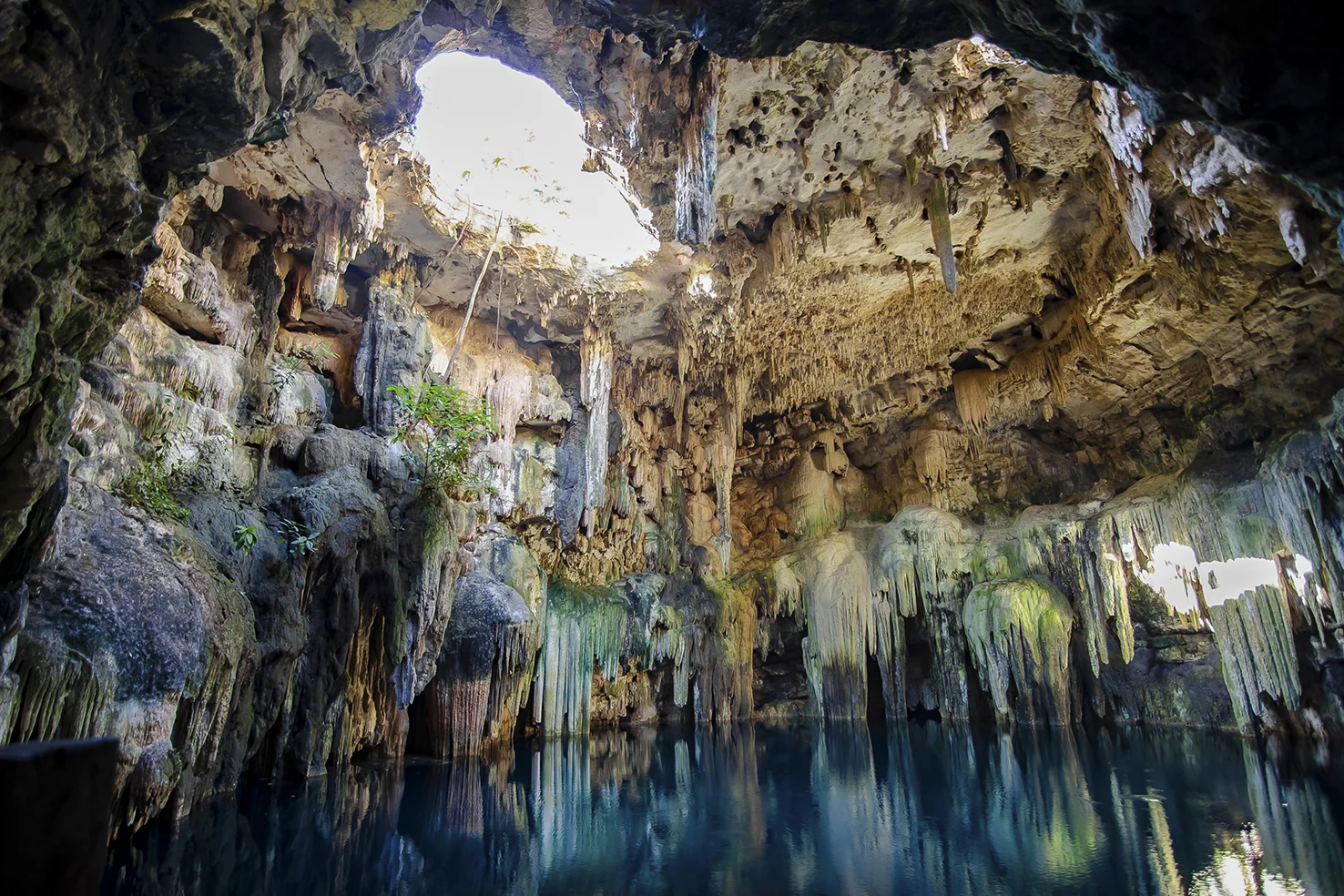A Glimpse Beneath the Surface: Cenotes of the Riviera Maya
Descubre la magia de los cenotes en la Riviera Maya. Historia, biodiversidad y consejos de visita con el enfoque sostenible de ELEVA.
Travelers often hear tales of white-sand beaches and clear turquoise waters along the Yucatán Peninsula. Yet below ground lies a lesser-known realm, natural sinkholes known as cenotes. These freshwater pools provided vital resources to the Maya and continue to fascinate people seeking an encounter with geological and cultural heritage.
The cenotes of the Yucatan Peninsula are much more than geological whims; they are a living bridge between the past and the present, a testimony of the silent dialogue between land and water.
Where Land Meets Mythical Depths
Centuries ago, the Mayas recognized cenotes as portals to realms beyond day-to-day existence. Ceremonies took place in these formations, where pottery and other relics still rest. Modern visitors who descend into a cenote notice a shift in atmosphere, with echoes that reverberate along cool limestone walls. Water clarity can stretch many feet down, revealing schools of curious fish and rock formations shaped over eons.
For those who venture to explore one of these sites, it doesn't take much imagination to feel the ancestral vibe: the dim lighting, the silence broken only by the trickling water, and the sensation that the rock, cold to the touch, also has an internal rhythm. Visiting a cenote can be as transcendent as any cultural pilgrimage.
An In-Depth Habitat
At first glance, the surface appears placid. The reality under the waterline, however, includes organisms found nowhere else.
- Some species have adapted to darkness, while others rely on roots from trees that stretch through cracks in the stone.
- Rays of sun pierce the gloom at certain angles, turning each moment into a small theatrical scene.
Each cenote offers a particular universe. Even within the peninsula, no two are alike. Here we are not talking about repetitive tourist postcards: we are referring to intimate worlds that develop in the darkness, far from the hustle and bustle of the surface.
Eleva Capital Group’s Perspective
Our approach highlights ethical development in the Riviera Maya. Each Eleva Capital Group development aims to respect the natural setting, including the fragile balance that sustains cenotes.
- We focus on materials with minimal ecological impact and promote guidance by local experts when visiting these sinkholes.
- Our goal is to ensure future generations can also learn from and enjoy these places, rather than seeing them altered beyond recognition.
We believe that by recognizing the importance of the cenotes, we contribute to keeping this natural and cultural legacy alive for those who come after us. It is an act of reciprocity with the land that offers us home and beauty.
Visiting Tips
Sliding into the waters of a cenote can be a bath of introspection. For the experience to be authentic and responsible, it is worth considering the following:
-
- Do some research: Not all cenotes have the same conditions or access rules. By informing yourself, you avoid surprises and contribute to the care of the place.
-
- Choose Environmentally Friendly Products: Sunscreens free from harsh chemicals lessen damage to aquatic life. A quick rinse before swimming reduces residues from lotions or fragrances.
-
- Pack Out What You Bring: Trash can accumulate quickly in delicate environments.
-
- Consult a Local Guide: Insightful guidance adds context, from historical uses to safety recommendations.
Visiting a cenote is an act of communion with the earth. Each drop of water that grazes the skin speaks of the origin of the peninsula, and understanding that narrative makes the experience even more profound.
Popular Cenotes to Explore
If you don't know where to start, there are some cenotes that are relatively accessible and very different from each other:
-
- Cenote Azul: Known for open-air shallows and a gentle slope into deeper areas.
-
- Dos Ojos: A network of caverns and tunnels for snorkeling and scuba enthusiasts.
-
- Gran Cenote: A spot featuring limestone structures visible from the surface, appealing to beginners and families.
Each one is a microworld, and you won't need to repeat the trip to be surprised: just observe the way the sun hits the water or how the sounds change in each corner.
Looking Ahead with Eleva Capital Group
We believe thoughtful interaction with cenotes enriches everyday life in the Riviera Maya. By choosing a home that values local heritage, residents not only find an enjoyable place to call their own but also support a cycle of preservation. When stepping into these freshwater openings, individuals tap into a world shaped by nature’s quiet craftsmanship and ancient traditions.
Connect with Eleva Capital Group
ELEVA CAPITAL GROUP’s residential options combine forward-thinking design with genuine care for this coastal region’s identity. Whether planning a full-time relocation or looking for a retreat, our team can share insights on properties that echo this enduring connection between land and water.
Cenotes invite us to pause and consider the stories etched in stone. With Eleva Capital Group, that story continues, blending responsible living with an extraordinary piece of Mexico’s past and present, just a few steps from home.


